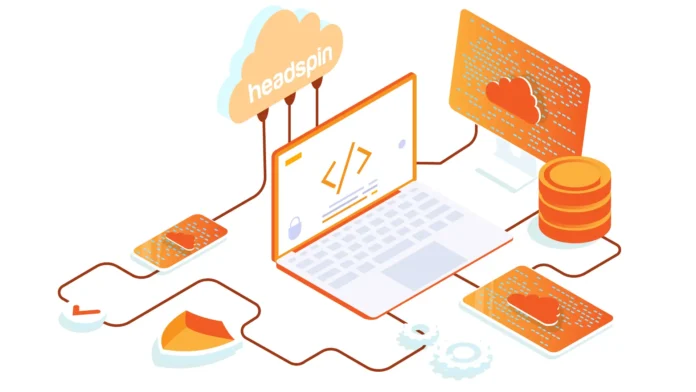Traditionally, achieving flawless user experience (UX) relied heavily on manual testing. It involved a human tester going through every step of the user journey, clicking buttons, filling out forms, and checking for errors. While manual testing has its place, it can be time-consuming, repetitive, and prone to human error. This is where end-to-end automation testing enters the scene as a game-changer.
In this guide, we will explore how end-to-end automation testing empowers you to achieve a seamless UX from the very beginning. It will equip you with the knowledge to implement a robust end-to-end automation testing strategy for a flawless user journey from login to logout.
Table of contents
The ROI of Automation: Investing in Efficiency
Time and resources are precious commodities in the development world. This is where automation testing services come in. They offer a powerful return on investment (ROI).
Imagine you spend countless hours manually testing every aspect of your application, only to find a critical bug right before launch. Automation testing eliminates this stressful scenario. By automating repetitive test cases, you free up your team to focus on higher-level tasks like innovation and development.
Automation testing can run the same tests consistently, 24/7, identifying bugs early and often. This translates to fewer delays, faster release cycles, and a significant reduction in overall testing costs. On top of the time savings, automation testing can pinpoint bugs with greater accuracy and detail, leading to higher-quality applications and happier users. It’s a win-win!
Tools and Frameworks for End-to-End Testing Success
Now, let’s get down to the nitty-gritty of building your automation testing arsenal. This involves choosing the right tools and frameworks to streamline your testing process and unleash the full potential of automation.
Here’s a roadmap to equip you for success:
1. Selecting the Right Tools:
There is a vast array of automation testing services and tools available, each with its strengths and weaknesses. Consider factors like:
- Your application type (web, mobile, desktop): Different tools cater to specific platforms.
- Your team’s skillset: Choose tools that your team is comfortable with or can easily learn.
- Scalability and maintenance: Think about how your testing needs might evolve in the future.
Some popular open-source options include:
- Selenium: A powerful and versatile framework for web application testing.
- Appium: Designed specifically for automating mobile app testing across various platforms.
- Cypress: A JavaScript-based framework offering a user-friendly approach to web app testing.
2. Choosing the Right Framework:
A framework is the scaffolding that supports your automation testing efforts. It provides structure, organization, and reusable components to make your tests efficient and maintainable. Consider keyword-driven frameworks. These frameworks separate test logic from the underlying code. This makes it easier to understand for non-technical testers.
Data-driven frameworks allow you to create reusable test cases with different sets of data, improving efficiency and test coverage. Behavior-driven development (BDD) frameworks encourage a collaborative approach to testing. Here developers and testers work together to define user stories and acceptance criteria.
3. Building a Sustainable Strategy:
Automation testing is not a one-time fix. It is an ongoing process that requires continuous refinement. You need to keep a few things in mind to set yourself for success. Start small and scale gradually. Don’t try to automate everything at once. Begin with critical user journeys and functionalities.
Focus on maintainability. Write clear, concise, and well-documented test cases for easy future updates. Integrate automation testing into your development lifecycle. Make automation testing a natural part of your development process, not an afterthought.
Automation testing services can provide valuable guidance in choosing the right tools and frameworks for your specific needs.
Pro Tips for End-to-End Automation Testing Mastery
Conquering the world of end-to-end automation testing takes more than just the right tools. Here are some valuable insights and best practices to ensure your automation efforts are not only effective but also sustainable in the long run:
- Befriend the Page Object Model (POM)
This design pattern promotes code reusability and maintainability by separating UI elements from test logic. It is like a map to your application, making your tests less brittle and easier to update when the UI inevitably changes.
- Embrace Version Control
Treat your automation scripts like any other code – version control them! This allows you to track changes, revert to previous versions if needed, and collaborate effectively with your team.
- Error Handling is Your Lifesaver
Tests are bound to encounter errors. By implementing robust error handling mechanisms, you ensure your tests do not fail due to unexpected circumstances, providing more reliable and actionable results.
- Think Like a User, Not a Machine
While automation is great, do not get bogged down in scripting every single click. Focus on core user workflows and prioritize critical functionalities for automation.
- Reporting is Key
Without clear reporting, automation testing can be a black box. Invest in clear test reports that highlight successes, failures, and detailed logs for easier debugging and analysis.
- Continuous Integration (CI) Saves You
Integrate your automation tests into your CI pipeline. This allows you to automatically run tests with every code commit. Thus, you can catch bugs early and often throughout the development process.
- Keep Learning and Evolving
The automation testing landscape is constantly changing. Stay up-to-date with the latest tools, frameworks, and best practices to ensure your skills and strategies remain relevant.
By following these pro tips and leveraging the power of automation testing services when needed, you can achieve a seamless user experience for your applications.
Conclusion
In today’s competitive digital landscape, a seamless user experience (UX) is the cornerstone of any successful application. Manual testing, while valuable, can be time-consuming and prone to errors. Therefore, relying on end-to-end automation testing seems to be the only best way.
By mimicking real user workflows, automation testing empowers you to identify and eliminate bugs that might disrupt a user’s journey. This translates into a significant ROI with faster release cycles, reduced costs, and quality applications. Hopefully, you have found this guide helpful in understanding how to implement end-to-end automation in your system. Bear the automation best practices in mind and hire reputable automation testing services.











